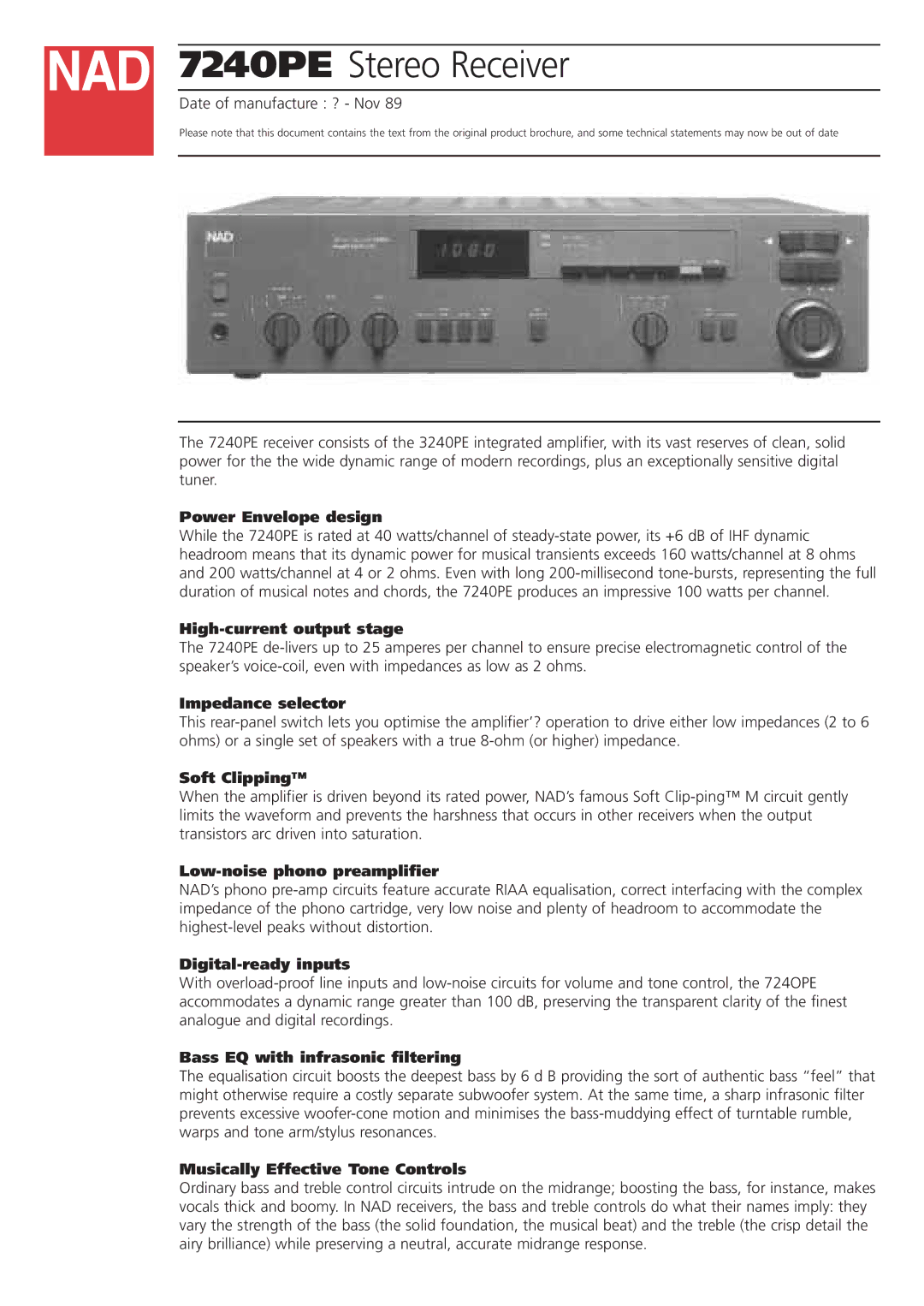7240PE specifications
The NAD 7240PE is a versatile and highly regarded integrated amplifier that has made a lasting impression in the world of audio equipment. Designed to deliver impressive sound quality, the NAD 7240PE brings together modern technologies and classic audio fidelity, making it a desirable choice for audiophiles and casual listeners alike.One of the standout features of the NAD 7240PE is its power output. With 40 watts per channel into 8 ohms, it is capable of driving a wide range of speakers efficiently, ensuring clear and dynamic sound at various volume levels. When connected to 4 ohm speakers, the power output is even more impressive, allowing for robust performance without compromising on audio quality.
The amplifier employs a complimentary push-pull output stage, which contributes not only to its powerful output but also to its ability to handle demanding audio passages without distortion. This design is further enhanced by the NAD's unique soft clipping feature, which gracefully manages overdrive situations, preserving the integrity of the audio signal and preventing harshness during peak volumes.
Additionally, the NAD 7240PE incorporates a range of input options, providing flexibility for users. With multiple line-level inputs, including a tape loop, users can seamlessly connect various audio sources such as CD players, tuners, and even turntables using a dedicated phono input. This expansive connectivity ensures that the amplifier can be the central hub of a home audio system.
Another notable technology present in the NAD 7240PE is its dynamic power reserve. This feature allows the amplifier to provide bursts of additional power during musical peaks, ensuring that transient sounds and dynamics are rendered with precision and impact. This results in a more engaging listening experience, making the most of the nuances in recordings.
The NAD 7240PE is also built with a robust and minimalist design philosophy, featuring a sleek chassis and user-friendly control layout. The front panel provides intuitive access to volume control, tone controls, and input selection, while the rear panel is laid out for easy cable management.
In conclusion, the NAD 7240PE stands out in the realm of integrated amplifiers through its combination of power, flexibility, and sophisticated technology. Its soft clipping feature, dynamic power reserve, and multiple input options mark it as a noteworthy choice for anyone seeking high-fidelity audio performance in a compact and elegantly designed unit. Whether for casual listening or critical listening sessions, the NAD 7240PE delivers a satisfying auditory experience that is hard to match.

